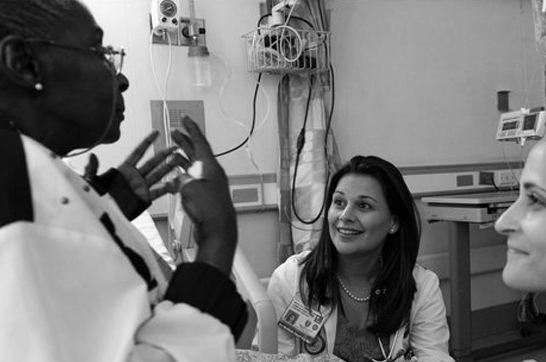Gout
Know More: Gout
Trustworthy information, straight from the source. Education is the first step in an empowering healthcare plan. Learn more about gout from prevention to diagnosis and treatment.
Condition Overview
Gout is an inflammatory arthritic condition caused by excessive production and/or decreased excretion of uric acid (i.e., a by-product of purine metabolism); both of which result in hyperuricemia. In gout, crystals of monosodium urate (MSU) are deposited in joints and other tissues, resulting in chronic arthritis, soft tissue masses called tophi, and renal damage. Gout attacks are extremely painful and associated with decreased quality of life (QOL).
Hyperuricemia is the most important risk factor for the development of gout. Other risk factors for gout include infection, obesity, hypertension, diabetes mellitus, surgery, organ transplantation, exercise, stress, alcohol consumption, a diet rich in purines (e.g., anchovies, organ meats, gravies, yeast extract, turkey, seafood) and high-fructose foods and drinks, a family history of gout, environmental exposure to lead, and certain medications (e.g., cyclosporine, thiazide diuretics, niacin, levodopa, aspirin).
Diagnosis & Treatment Options

Diagnosis
Regardless of the joint affected, an episode of gout may be accompanied by chronic pain, tenderness of soft tissues, fever, or chills along with inflammation and redness. Gout episodes often commence without warning; the patient experiences extreme pain and may have difficulty walking. The most common site of discomfort is the big toe, but other joints may be affected. Hyperuricemia may result in renal dysfunction.
Kidney stones may be present; patients with gout are at significantly higher risk for kidney stone formation compared with patients without gout
Laboratory Tests That May Be Ordered
- CBC may show leukocytosis during an acute attack
- Serum levels of uric acid may be elevated (> 6.8 mg/dL)
- Urine studies may show elevated levels of uric acid and creatinine
- Cytologic examination of synovial fluid (aspirated from affected joint) that reveals the presence of needle-shaped urate crystals is diagnostic of gout
Treatments
Assess level of pain/other discomfort, monitor vital signs, assess all physiologic systems, and review laboratory/diagnostic study results; immediately report abnormalities and treat with prescribed medications, which are individualized according to gout stage and patient-specific symptoms
- Treatment of an acute gout attack usually includes medications that relieve pain and swelling but do not reduce uric acid level, e.g.,
- NSAIDs (e.g., indomethacin [usually the drug of choice], ibuprofen, naproxen), which are rapid acting and considered first-line treatment
- Low-dose NSAIDS remain the first-line treatment for gout attack prophylaxis unless there is either medical contraindication or a lack of tolerance (Khanna et al., 2012b)
- Monitor efficacy and adverse effects; all NSAIDs can cause serious GI effects; use cautiously in patients with a history of peptic ulcer disease
- colchicine administered orally, which is an effective alternative to NSAIDs and most beneficial when given within 24 hours of an attack
- I.V. colchicine is not currently advocated for the treatment of acute gout; in the U.S. the FDA ruled in 2008 that I.V. colchicine could no longer be produced due to its toxicities
- systemic or intra-articular corticosteroids, which can be used when NSAIDs and colchicine are ineffective or are contraindicated
- Treatment of chronic gout includes the use of agents that reduce serum uric acid levels, including allopurinol or febuxostat, to prevent uric acid formation, and probenecid to prevent uric acid retention
- Provide elevation and immobilization of affected joint, use of bed cradle, and bed rest. If tophi are present, provide soft clothing and meticulous skin care
- Provide/educate about a low-purine diet
- Decrease Anxiety and Irritability, Promote Emotional Well-Being, and Educate
- Assess patient’s anxiety level and coping ability; educate and encourage discussion about gout risk factors, pathophysiology, potential complications, treatment risks and benefits, lifestyle alterations, the importance of treatment adherence, and individualized prognosis
Preparing for Care

North Memorial’s Rheumatology Program
North Memorial’s rheumatologists are certified by the American Board of Internal Medicine, and provide diagnosis and treatment of a wide array of adult rheumatologic disorders.
With an accurate diagnosis and a shared understanding of your illness, you and your rheumatologist can work together to design a treatment program aimed at managing pain, reducing inflammation and ensuring your quality of life.
